I was privileged to participate in a PolarTREC expedition to Greenland in June of 2016. PolarTREC, and other teacher research experiences, put educators into active roles with respect to science and are thus extraordinary opportunities to serve as role models for our students. PolarTREC afforded me the chance to model for my students the adventurous spirit that for centuries has led humans to explore the world in new and vigorous ways. Moreover, it gave me an opportunity to put into practice the lessons that I share regularly with sixth, seventh, and eighth grade students: the investigative skills and methods that I assure them they must master.
Setting out for Greenland for “Climate Change and Pollinators 2016” with Christine Urbanowicz of Dartmouth College, I was seeking adventure in an unfamiliar part of the world as well as a deeper understanding of a threatened ecosystem. I looked forward to primitive camping in the tundra biome, training in identifying plants, rigorous hiking, and investigating the interactions of pollinating insects with tiny tundra flowers. In all of these things I was not disappointed. However, I underestimated the vastness of the landscape and the minute nature of the science!
Doing research science in the field or in a lab gives a teacher experience to draw upon when working with students, as well as credibility with students, parents, and peers. All of these groups followed my expedition by means of Instagram, Facebook, and the PolarTREC journals; they celebrated my adventures with me. 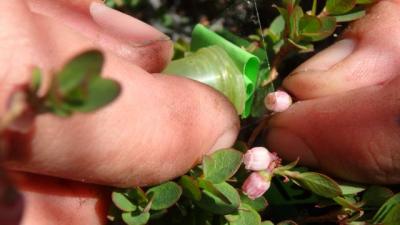
Specifically, my research experience involved documenting Vaccinium uliginosum (dwarf blueberry) growth and development especially as impacted by pollinating insects. At .25m2 research plots we hand-pollinated selected flowers, leaving alone others labeled as controls; documented flower development and fruiting; observed visits by pollinating insects (mostly flies and mosquitoes); and used a variety of insect-sampling methods. Fifteen research plots were located in close proximity to the glacier (1-5km), and fifteen were farther away (30-35km). Urbanowicz’s previous research has revealed that Vaccinium plants bloom earlier at a distance from the ice sheet. Also, the plants are pollen-limited in both conditions, meaning that the blossoms do not receive enough pollinator visits for effective pollination. Urbanowicz’s current project is based on the Stress Gradient Hypothesis which holds that organisms in difficult conditions facilitate one another’s success to a greater degree than in more conducive environments. The data we collected will be analyzed this winter to determine whether pollinating insects are more effective for Vaccinium in proximity to the ice sheet rather than farther away where there are larger plants which may be encouraging insects to concentrate on the larger plants rather than tiny Vaccinium. The temperature difference between the research sites near the glacier and at a distance is about 3o Celsius; this is equivalent to the forecast change in temperature in western Greenland in the next 70 years. Thus, the current stress/temperature gradient models the possible effect of climate change in the same region.
Our small research team (myself, Urbanowicz, and an undergraduate research assistant) shared our campsite with other graduate students from Dartmouth College. Our site rambled across a sandy expanse situated between sand dunes and consisted of a personal tent for each of us as well as a shared kitchen tent and meeting tent. We were located a few miles outside of the small town of Kangerlussuaq, a transportation hub for western Greenland and also the site of the Kangerlussuaq International Science Station (KISS). 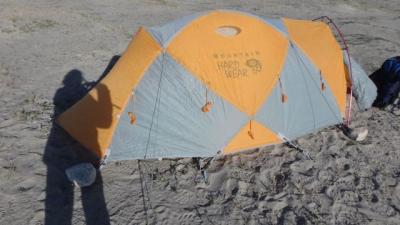
Our days in the field were spent driving in a small pick-up truck from one site to another and then hiking to the research plots to do flower counts, berry counts, leaf counts, insect counts or set up insect traps of various sorts for collection later. Rigorous attention to detail was maintained at all times; never did Urbanowicz consider cutting a single corner, confronting adversity in the form of uncompromising weather conditions and a washed-out bridge with scientific professionalism at all times.
Nothing can serve as a complete description of the incredible ecosystem in which we found ourselves, but I will try to share some of my sense of wonder from those weeks. Since Greenland consists either of glacier or tundra, there are no trees to obstruct the view of the sky and the wide-open landscape below. 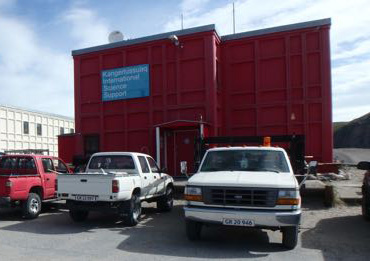
So how did I wind up in such a unique part of the world? Originally I applied to PolarTREC without a clear idea what I was getting myself into. My experience began in Fairbanks, Alaska in February for an orientation to polar science and my PolarTREC responsibilities. I met a wonderful group of talented, interesting educators as well as the Arctic Research Consortium of the United States (ARCUS) support team who are also talented and creative people. Together we explored our responsibilities, the technology that would help us accomplish our goals, and the town of Fairbanks. We spent eight hours a day in our “classroom” (a hotel meeting room), had our meals together, and did homework every night. It was a demanding week in a beautiful state with wonderful people. Then I spent months back home in Ohio studying up on Greenland, practicing using the technology (especially sitting in my yard, learning to use the satellite phone), and drumming up community interest in my expedition.
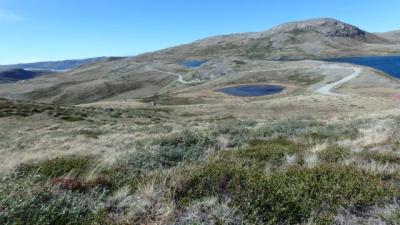
Before my departure, I thought extensively about what I hoped to achieve with this experience. Some things I expected to learn in the Arctic included sampling methods for investigating insects and plants, new ways of implementing technology effectively in my classroom, and ideas for invigorating my climate change curriculum. I can certainly say that I met these goals. In particular, I gained a great deal of confidence with technology, from social media to the satellite phone and from using a new computer set-up to new research tools.
Before setting out, I also anticipated ways in which my polar experience, and that of the other PolarTREC teachers, could expand my curricular goals. I have already provided fieldwork experiences to my students in the past, but I was seeking ways in which I could expand these to include more opportunities for the seventh and eighth graders. Upon my return, I have developed an outdoor activity for each of those grade levels. In addition, I have purchased a digital thermometer/anemometer to enhance the students’ documentation of abiotic field conditions. Another curriculum goal I established before departure was to increase data collection/management opportunities for students and requirements that they engage in more writing from evidence. Mirroring my Arctic fieldwork, my lesson planning pushes students to make accurate measurements, collect data in an organized fashion, and to write evidence-based conclusions. Another curriculum goal, perhaps the most important, was to develop my knowledge base with respect to climate change and, consequently, develop ways to use my experience to help members of the community understand its implications for ecosystems and resources at home as well as around the world.
With these goals in mind, I have designed lessons that can be found on the PolarTREC website. One of these is a permafrost activity for sixth grade (see “Permafrost Inquiry”) modeling the impact of permafrost melt on buildings. Another is a bee bowl insect-sampling activity for seventh grade (see my Classroom Implementation Strategy). The third is a webquest investigating the impact of global temperature change on the ranges of insects, birds, and trees (see “Climate Change Impact Webquest”).
Another unique aspect of this experience for me was the public attention. I created a teacher Facebook page and an Instagram and linked both the PolarTREC page and the Instagram to my teacher Facebook, so I was garnering the attention of friends and family but also school families and their friends and families. I have to admit it was gratifying to receive all those ‘likes’ and know that people were really following the expedition. Piquing the interest of middle school students in the summer is a lofty goal, and I achieved it! 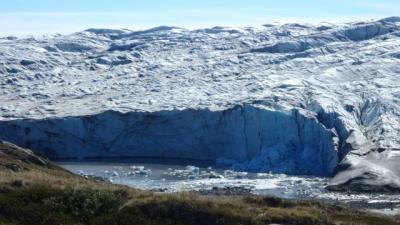
In concluding, I cannot stress enough how valuable research experience can be for teachers. We teach our students about scientific methods and try to give them experiences that adequately prepare them to “do real science”, but a teacher’s firsthand research experience can help him/her bring verisimilitude and energy to classroom experiences. Furthermore, work in the field helps teachers create and implement field experiences for students. When we engage students in this way, we their build enthusiasm for STEM and increase their competence and confidence. Personally, I am honored to serve as a scientific liaison, bringing polar science back to my community and helping people to recognize the implications of climate change!

| Attachment | Size |
|---|---|
| Download Report (1.17 MB)1.17 MB | 1.17 MB |
This program is supported by the National Science Foundation. Any opinions, findings, and conclusions or recommendations expressed by this program are those of the PIs and coordinating team, and do not necessarily reflect the views of the National Science Foundation.
